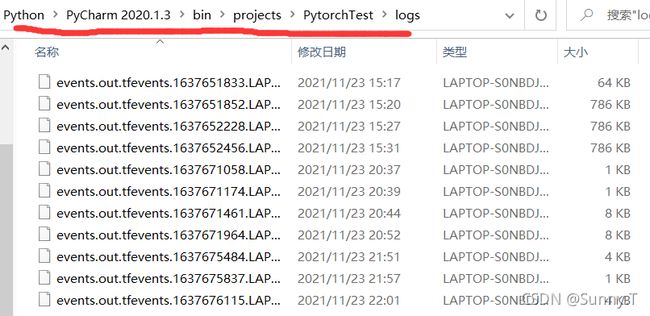TensorboardX(pytorch)
用tensorboardX可视化神经网络
# 用tensorboardX可视化神经网络
import torch
import torch.nn as nn
import torch.nn.functional as F
import torchvision
from tensorboardX import SummaryWriter
# 构建神经网络
class Net(nn.Module):
def __init__(self):
super(Net, self).__init__()
self.conv1 = nn.Conv2d(1, 10, kernel_size=5)
self.conv2 = nn.Conv2d(10, 20, kernel_size=5)
self.conv2_drop = nn.Dropout2d()
self.fc1 = nn.Linear(320, 50)
self.fc2 = nn.Linear(50, 10)
self.bn = nn.BatchNorm2d(20)
def forward(self, x):
x = F.max_pool2d(self.conv1(x), 2)
x = F.relu(x) + F.relu(-x)
x = F.relu(F.max_pool2d(self.conv2_drop(self.conv2(x)), 2))
x = self.bn(x)
x = x.view(-1, 320)
x = F.relu(self.fc1(x))
x = F.dropout(x, training=self.training)
x = self.fc2(x)
x = F.softmax(x, dim=1)
return x
# 把模型保存为graph
#定义输入
input = torch.rand(32, 1, 28, 28)
#实例化神经网络
model = Net()
#将model保存为graph
with SummaryWriter(log_dir='logs',comment='Net') as w:
w.add_graph(model, (input, ))
用tensorboardX可视化损失值
import torch
import torch.nn as nn
from tensorboardX import SummaryWriter
import numpy as np
input_size = 1
output_size = 1
num_epoches = 60
learning_rate = 0.01
dtype = torch.FloatTensor
writer = SummaryWriter(log_dir='logs', comment='Linear')
np.random.seed(100)
x_train = np.linspace(-1, 1, 100).reshape(100, 1)
y_train = 3 * np.power(x_train, 2) + 2 + 0.2 * np.random.rand(x_train.size).reshape(100, 1)
model = nn.Linear(input_size, output_size)
criterion = nn.MSELoss()
optimizer = torch.optim.SGD(model.parameters(), lr=learning_rate)
for epoch in range(num_epoches):
inputs = torch.from_numpy(x_train).type(dtype)
targets = torch.from_numpy(y_train).type(dtype)
output = model(inputs)
loss = criterion(output, targets)
optimizer.zero_grad()
loss.backward()
optimizer.step()
# 保存loss的数据与epoch数值
writer.add_scalar('训练损失值', loss, epoch)
启动Tensorboard控制台
步骤如下:
- 定位到你训练后log文件保存的位置;
- 通过命令行cd 到log文件的上一级目录,或者直接在log文件上一级目录框输入cmd进入命令行;
- 键入命令行,启动TensorBoard;
- 复制红线上的网址到Chrome浏览器中就会看到TensorBoard的页面了。
结果示意图
我们可以在Chrome浏览器中看到TensorBoard的页面,分别如下图所示:



